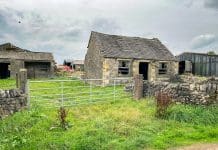Paul Miner, Senior Planning Officer at the Campaign to Protect Rural England (CPRE) highlights the findings of a recent report that shows planning reforms are putting rural England under siege.
The government’s planning reforms are unnecessarily damaging the countryside and undermining local democracy, while failing to prioritise brownfield land and the regeneration of urban areas, and deliver the homes that communities need. That’s the main conclusion of a new report, Community Control or Countryside Chaos? by the Campaign to Protect Rural England (CPRE). The report analyses the impact of the National Planning Policy Framework (NPPF) on the countryside in the 2 years since it was adopted.
The part of the NPPF that has had possibly the most impact is the requirement on local authorities to have a 5 year supply of ‘deliverable’ sites for new housing. This policy has given more power to developers who wish to develop profitable greenfield sites, as brownfield sites are more challenging to bring forward. Resultantly, local councils are being forced to accept major developments against their will in all parts of the country. In addition, draft and adopted Local Plans propose over 700,000 houses in the countryside – including 190,000 allocated for the Green Belt.
In the majority of cases, the government is now backing developers of large housing schemes. CPRE’s analysis of planning appeals for the largest housing schemes shows 39 developments (67% of the cases analysed) were allowed in the past year. Many councils, also facing wide ranging budget cuts, are now reluctant to defend an appeal due to the risk of incurring substantial costs. Fylde Borough Council in Lancashire, for example, recently had to pay costs of £100,000 when it was overruled at appeal.
Government policies have also served to significantly slow the rate at which local plans are being adopted, after a promising initial increase between 2010 and 2012. On current rates of progress, only around two thirds (65%) of local authorities will have up-to-date, sound Local Plans by the May 2015 General Election. This is leaving councils powerless to decide what land should be developed in the best interests of local communities.
As a consequence, the countryside surrounding a number of towns and villages is ‘under siege’. Developers are exploiting the absence of an up-to-date Local Plan to submit speculative planning applications for large housing developments on several greenfield sites around a settlement. The report highlights 11 particularly serious recent examples. Proposals for development are coming forward that, in cases such as Kentford in Suffolk, would lead to the size of a village more than doubling. The issues recently highlighted by MPs including David Heath and Nick Herbert are widespread, and their causes can be directly traced to the policies in the NPPF, particularly on housing land supply.
The report also reveals that only just over a quarter (27%) of local authorities propose to prioritise brownfield sites over greenfield because the NPPF does not give enough support for them to do so.
The new Planning Practice Guidance, published in March 2014, seeks to address a number of issues where the NPPF is insufficiently clear. CPRE welcomes the new guidance which calls on local authorities to take a range of actions to bring forward brownfield sites for new development, and also that un-met need for housing does not in itself justify changing Green Belt boundaries. Other elements of the guidance (for example the sections on taking market signals into account in assessing development needs and on rural housing) could make problems worse, however. We believe, therefore, that the problems we have highlighted will continue unless the government sets a clearer policy of requiring brownfield sites to be used before greenfield.
CPRE’s position is that the government urgently needs to rethink its planning policies. There have been some recent signs that Ministers are willing to do more to promote brownfield development and protect the Green Belt. This is very welcome, but much more needs to be done to protect the countryside, put communities back in the driving seat, and build the new homes the country needs. ■
CPRE’s report Community Control or Countryside Chaos is available from www.cpre.org.uk
**********
Paul Miner
Senior Planning Officer
Campaign to Protect Rural England (CPRE)
Tel: 020 7981 2800
More CPRE articles found here














